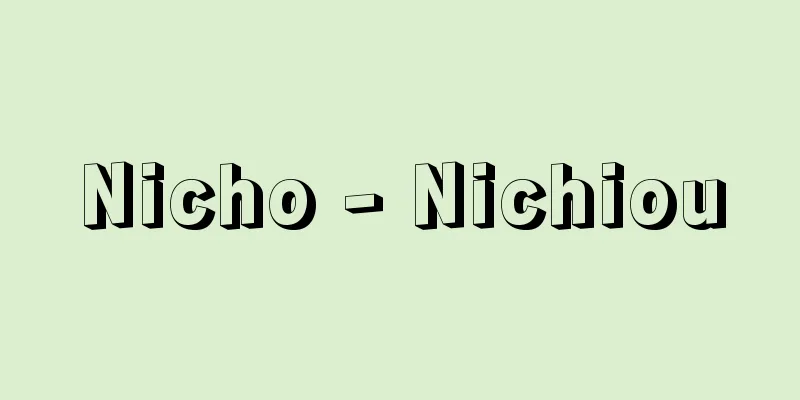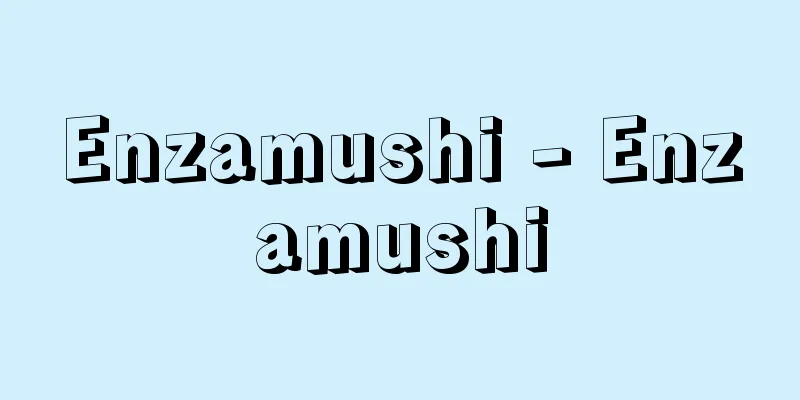Nicho - Nichiou

|
A Nichiren sect monk from the early modern period. The founder of the Fujufuse sect. His pen name was Kyoei. He was called Busshoin, later Ankokuin. Born in Kyoto, he became a monk at the age of 10 by Nichinan, Jitsujoin, Myokakuji, Kyoto, and succeeded him at the age of 28, as per his will. In 1595 (4th year of Bunroku), when Toyotomi Hideyoshi invited 100 monks from each sect to serve in order to pray for the happiness of their ancestors, the Nichiren sect held a meeting to decide whether to accept the invitation or not, as the sect rules do not accept donations from other sects. To avoid rebelling against the powerful government, Ichinyoin Nichiju (1549-1623) and others decided to serve. Nichio was the only one who opposed this, and left Sokuji Temple and retreated to Koizumi, Tamba (Kyoto Prefecture), where he criticized the actions of Nichiju and his group. Nichiju and his group then sued, claiming that they had violated the rules of the government, and Ieyasu ruled that Nichio was defeated and exiled to Tsushima. As a result, two sects emerged within the Nichiren sect: "No receiving and no giving" and "No receiving and no giving," and the original no receiving and no giving fell into the minority. After 13 years on the island, Nichio was pardoned in 1612 (Keicho 17) and returned to Kyoto, and the two sects made peace, and in 1623 (Genwa 9), no receiving and no giving was officially approved. Later, the two sects broke up again, and political powers intervened, and Nichio was exiled to Tsushima again on April 2, 1630 (Kan'ei 7), for the No receiving and no giving sect to be heretical. However, Nioku died on February 10 of the same year at the age of 66, so his exile was posthumous. [Shin Aiba, September 19, 2017] "The History of the Martyrdom of the Fu-U-T-Ge Sect" by Shin Aiba (1976, Okura Publishing) [Reference item] |Source: Shogakukan Encyclopedia Nipponica About Encyclopedia Nipponica Information | Legend |
|
近世の日蓮(にちれん)宗の僧。不受不施(ふじゅふせ)派の祖。字(あざな)は教英(きょうえい)。仏性院(ぶっしょういん)、のちに安国院と号する。京都に生まれ、10歳のとき京都妙覚寺実成院日典につき出家、28歳で遺命により師法を嗣(つ)ぐ。1595年(文禄4)豊臣秀吉(とよとみひでよし)が先祖追福のため各宗の僧100人宛の出仕を招請した際、日蓮宗は他宗の施しを受けない宗規により、この招請に応ずるか否かについて会議の結果、大権力にあらがうことを避けようと一如院日重(にちじゅう)(1549―1623)らの意見で出仕に決まった。日奥ひとりこれに反対し、即日寺を出て丹波(たんば)(京都府)小泉に退き、日重らの行動を批判した。日重らは逆に公儀違背を名として訴え、家康の裁決により、日奥は敗れて対馬(つしま)に流された。このため日蓮宗門内に「受不施」「不受不施」の2派が生まれ、本来の不受不施は少数派に転落した。日奥は在島13年ののち、1612年(慶長17)に赦免され京都に還住、受・不両派は和睦(わぼく)し、1623年(元和9)不受不施も公許となった。のち両派はふたたび決裂、政治的権力も介入し、不受派を邪義として日奥を1630年(寛永7)4月2日、ふたたび対馬に配流した。しかし、日奥は同年2月10日66歳で死去したので、いわゆる死後の配流となった。 [相葉 伸 2017年9月19日] 『相葉伸著『不受不施派殉教の歴史』(1976・大蔵出版)』 [参照項目] |出典 小学館 日本大百科全書(ニッポニカ)日本大百科全書(ニッポニカ)について 情報 | 凡例 |
Recommend
A Woman's Life
1. A full-length novel by Guy de Maupassant. Publi...
Market town - Ichibamachi
This refers to a town settlement that developed a...
Poplin - Poplin (English spelling)
Generally, it is a plain weave fabric with some w...
Photosensitive opal glass - Photosensitive opal glass
…If a glass composition that is easily crystalliz...
Folded ceiling - Origage tenjo
A ceiling with a fold. [Japanese Architecture Dict...
Jinjutsuminran - Jinjutsuminran
A popular uprising at the end of the Yi Dynasty in...
tantalum
Ta. An element with atomic number 73. It is a tra...
Altair - Altair
…the hero of Greek legend, famous for the Calydon...
Kuhn, Abraham
…From the late 19th century to the early 20th cen...
al-Mājini (English spelling)
...In the short story, after the Romantic school ...
Christian School - Christian School
This school was established by the Catholic Church...
Aqua-lung (English spelling) Aqualung
...see diagram) and breathing apparatus. This pre...
Lu Zhi; Lu Chih
[Raw] Tenpo 13 (754) [Died] Eitei 1 (805) A famous...
Paionios - Paionios (English spelling)
Date of birth and death unknown. Ancient Greek sc...
Kanamori Sowa
A tea master from the early Edo period. Founder o...









